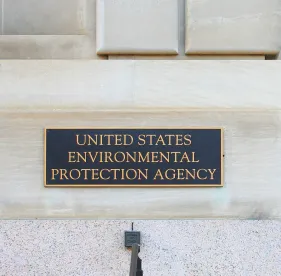On July 31, 2020, the plaintiffs and EPA filed a joint case management statement in the U.S. District Court for the Northern District of California case seeking a rulemaking under Section 6 of the Toxic Substances Control Act (TSCA) to prohibit the addition of fluoridation chemicals to drinking water supplies. Food & Water Watch, Inc. v. EPA, Case No. 3:17-cv-02162-EMC. As reported in our June 12 and June 22, 2020, blog items, the court held a bench trial that concluded on June 17, 2020. After hearing closing arguments, Judge Chen asked plaintiffs and EPA to consider how to reach an agreement. According to the joint case management statement, the parties have met and conferred to discuss the potential of EPA considering a new or amended petition so that EPA, inter alia, “could consider the new science that has been published subsequent to the initial petition.” Plaintiffs offered to submit a new petition to EPA that contains all of the evidence presented at trial, including the expert declarations, expert testimony, and exhibits. EPA contends that plaintiffs’ proposal to “package” the evidence presented at trial as a new petition under Section 21 of the Toxic Substances Control Act (TSCA) “would be insufficient to reach a finding of unreasonable risk.” EPA maintains that “meaningful review of a new petition based on the specific evidence-base available for evaluating potential neurotoxic effects from exposure to fluoride from community water fluoridation programs” should include: (1) a systematic review; (2) raw data for the key studies upon which plaintiffs rely; and (3) the data underlying plaintiffs’ risk calculations, including their benchmark dose (BMD) analysis. Plaintiffs are willing to provide the data underlying Dr. Grandjean’s risk calculations, but “cannot agree to the other two requirements.” The joint statement states that first, plaintiffs maintain that they have already presented sufficient evidence to demonstrate an unreasonable risk under TSCA and are unwilling to do a new systematic review above and beyond what their experts have already done. Second, plaintiffs maintain that they do not have the ability to provide the “raw data” for the key studies upon which they rely because the data are not theirs, and that EPA is thus asking for something that plaintiffs cannot provide. Finally, plaintiffs do not believe that the raw data are necessary for EPA to evaluate the published peer-reviewed studies, and, indeed, requiring these data is “contrary to the health protective goals of TSCA.”
On August 3, 2020, plaintiffs filed a further statement on EPA’s position regarding a new petition. Plaintiffs state that they “feel compelled to bring to the Court’s attention the broader policy shift that EPA’s raw data demand represents, and the overwhelming criticism this policy has received from virtually all sectors of the public health and scientific communities.” According to the plaintiffs, EPA articulated this policy shift in its March 18, 2020, supplemental notice of proposed rulemaking (SNPRM) regarding “Strengthening Transparency in Regulatory Science” in which “EPA proposed limiting, or excluding altogether, its reliance on any peer reviewed study -- no matter how relevant or well regarded -- if the underlying raw data [are] not made publicly available.” Plaintiffs cite a “detailed analysis signed by dozens of Harvard scientists,” which states that “EPA’s new policy ‘is based on a profoundly misguided view of how the scientific process works’ and ‘unnecessarily impedes EPA’s ability to base its internal analyses and regulatory decisions on the best available science.’ Further, the rule ‘adopts a partial and biased approach to transparency that systematically favors industry science over academic science.’”
EPA filed a response on August 4, 2020, describing plaintiffs’ further statement as “procedurally inappropriate and substantively untrue.” According to EPA, by releasing the raw data and a detailed explanation of their statistical methods, the authors of the studies “could satisfy incongruities and ensure the scientific record is clear.” EPA states that it “takes the position that a meaningful substantive review, as contemplated by the Court, of the evolving scientific evidence published since Plaintiffs submitted their 2016 petition should include raw data for the key studies upon which Plaintiffs rely and, according to Dr. Grandjean’s trial testimony, is forthcoming.” EPA reiterates that its position “is based on the specific evidence-base available for evaluating potential neurotoxic effects from exposure to fluoride from community water fluoridation programs as necessary to support a potential TSCA section 6(a) rulemaking” and not, as alleged by plaintiffs, “a broader policy shift.”
The court held a status conference on August 6, 2020, via Zoom. The judge suggested that plaintiffs file a new petition and that he is holding the case open to allow them to do so. The next status hearing will be held November 5, 2020.




 />i
/>i
